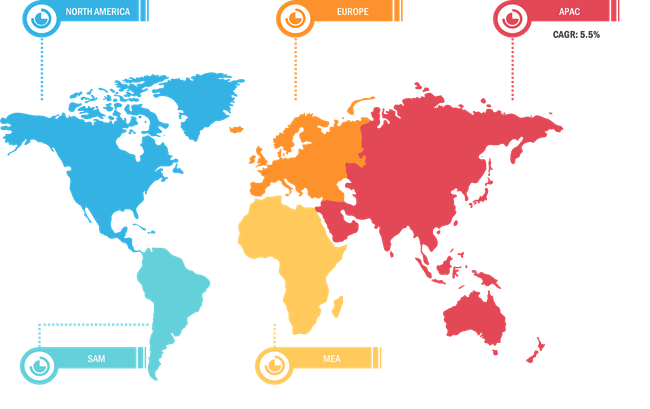Growing Requirement for Nontoxic and Highly Biodegradable Products to Escalate Natural Surfactants Market Growth
According to our latest market study on “Natural Surfactants Market Forecast to 2028 – COVID-19 Impact and Global Analysis – by Type and Application,” the market is expected to grow from US$ 11,558.34 million in 2021 to US$ 16,069.28 million by 2028; it is estimated to grow at a CAGR of 5.0% from 2022 to 2028. The report highlights key factors driving the natural surfactants market growth and prominent players along with their developments in the market.
Natural surfactants are manufactured by using feedstocks obtained from renewable sources. The market for natural surfactants is highly competitive due to the presence of many regional and global players. Players operating in the natural surfactants market are competing with each other based on product quality, price, and product differentiation. Market players are also focusing on adopting different strategies to stand out as strong competitors in the market.
In recent years, the focus on the production of products that cause less pollution, have low toxicity, and have high biodegradability is increasing. Due to the ability to improve the emulsification of hydrocarbons for various applications and ecological benefits, natural surfactants are becoming increasingly popular. Natural surfactants are used in various industries, including food, medicine, textiles, and oilfield chemicals. The strict environmental and governmental regulations are restricting the use of conventional surfactants. This factor is creating demand for nontoxic and highly biodegradable bio-based or natural surfactants.
A few players operating in the global natural surfactants market include BASF SE, Clariant AG, Croda International Plc, Dow Inc., KAO Corporation, Lankem Ltd., Solvay S.A., Arkema, Stepan Company, and Evonik Industries AG. Market players are focusing on providing high-quality products to fulfill customer demand. They are also focusing on strategies such as investments in research and development activities and new product launches.
Impact of COVID-19 Pandemic on Natural Surfactants Market
The unprecedented rise in the number of COVID-19 cases across the globe and the subsequent lockdown of numerous manufacturing facilities hampered the natural surfactants market growth. The overall disruptions in manufacturing processes and research & development activities have restrained the natural surfactants market growth. The declined sales of cosmetics and personal care products have also adversely affected the demand for natural surfactants, as natural surfactants are widely used in skincare and hair care products. Additionally, the reduced production of oilfield chemicals, paper making, and personal care products have negatively affected the demand for natural surfactants from different regions. However, the market is reviving due to the government's significant measures. Further, the use of different cleaning products is increasing due to the growing importance of hygiene and cleanliness. This is supporting the natural surfactants market growth.
Global Natural Surfactants Market Breakdown – By Region
Natural Surfactants Market Forecast to 2028 - COVID-19 Impact and Global Analysis By Type (Anionic, Cationic, Non ionic, and Amphoteric) and Application (Detergents, Personal Care, Industrial and Institutional Cleaning, Oilfield Chemicals, Agriculture Chemicals, and Others)
Natural Surfactants Market Report | Size, Share & Growth by 2028
Download Free Sample
The report includes the segmentation of the global natural surfactants market as follows:
The global natural surfactants market is segmented into type, application, and geography. Based on type, the market is segmented into anionic, cationic, non-ionic, and amphoteric. Further, the anionic segment is categorized into glutamate, potassium cocoate, isethionate, and others. The cationic segment is further segmented into brassicyl isoleucinate esylate, dialkylester ammonium methosulfate, esterquat benzalkonium chloride, polyquaternium, CTAC (Cetrimonium Chloride), BTAC (Behentrimonium Chloride), and others. The non-ionic segment is sub segmented into saponins, glucosides, glycerides, ethoxylates, Cocamide MEA (CMEA), Cocamide DEA (CDEA), and others. The amphoteric segment is further segmented into betains, amphoacetates, sultaines, amine oxides, and others. Based on application, the global natural surfactants market is segmented into detergents, personal care, industrial and institutional cleaning, oilfield chemicals, agriculture chemicals, and others. By geography, the global natural surfactants market is broadly segmented into North America, Europe, Asia Pacific, the Middle East & Africa, and South & Central America. The global market in North America is further segmented into the US, Canada, and Mexico. The global market in Europe is sub segmented into Germany, France, the UK, Italy, Russia, and the Rest of Europe. The global market in Asia Pacific is further categorized into China, India, Japan, Australia, South Korea, and the Rest of Asia Pacific. The market in the Middle East & Africa is further segmented into South Africa, Saudi Arabia, the UAE, and the Rest of Middle East & Africa. The global market in South & Central America is further categorized into Brazil, Argentina, and the Rest of South & Central America.
Contact Us Phone: +1-646-491-9876Email Id: sales@theinsightpartners.com